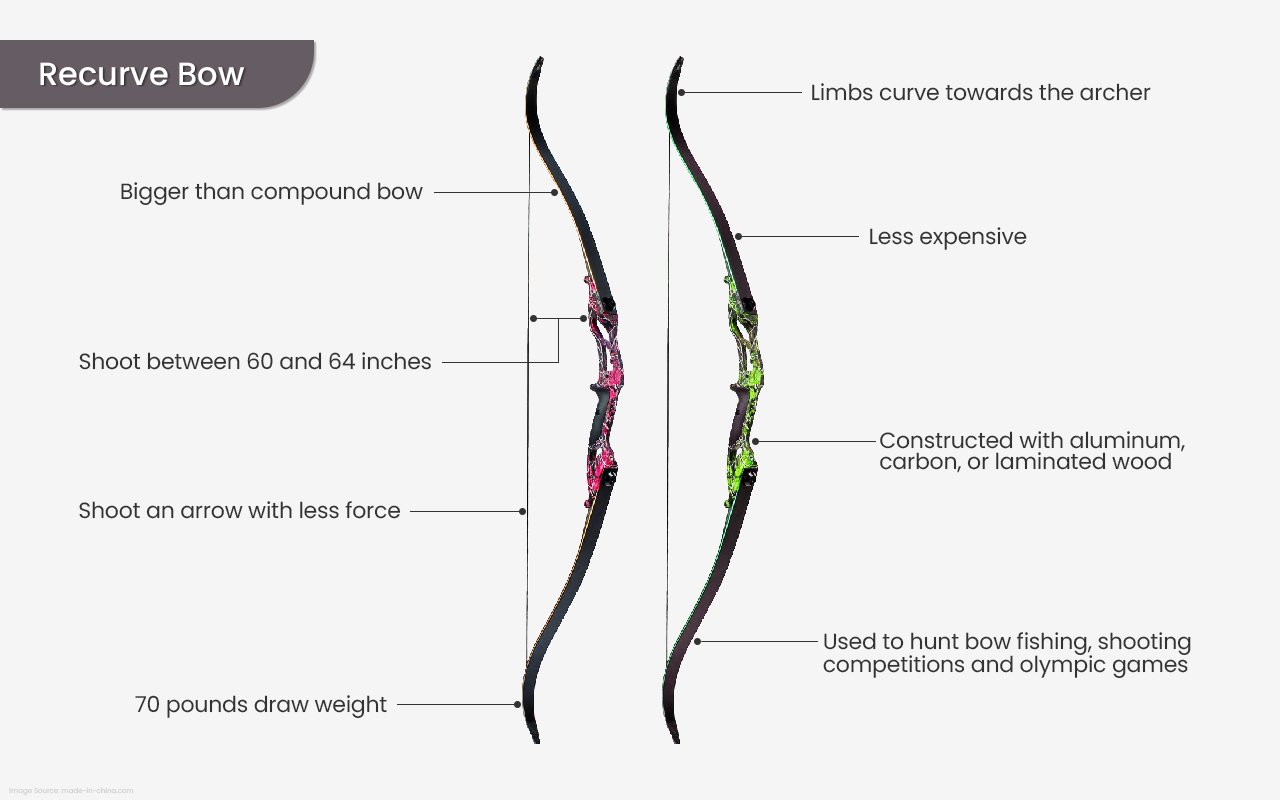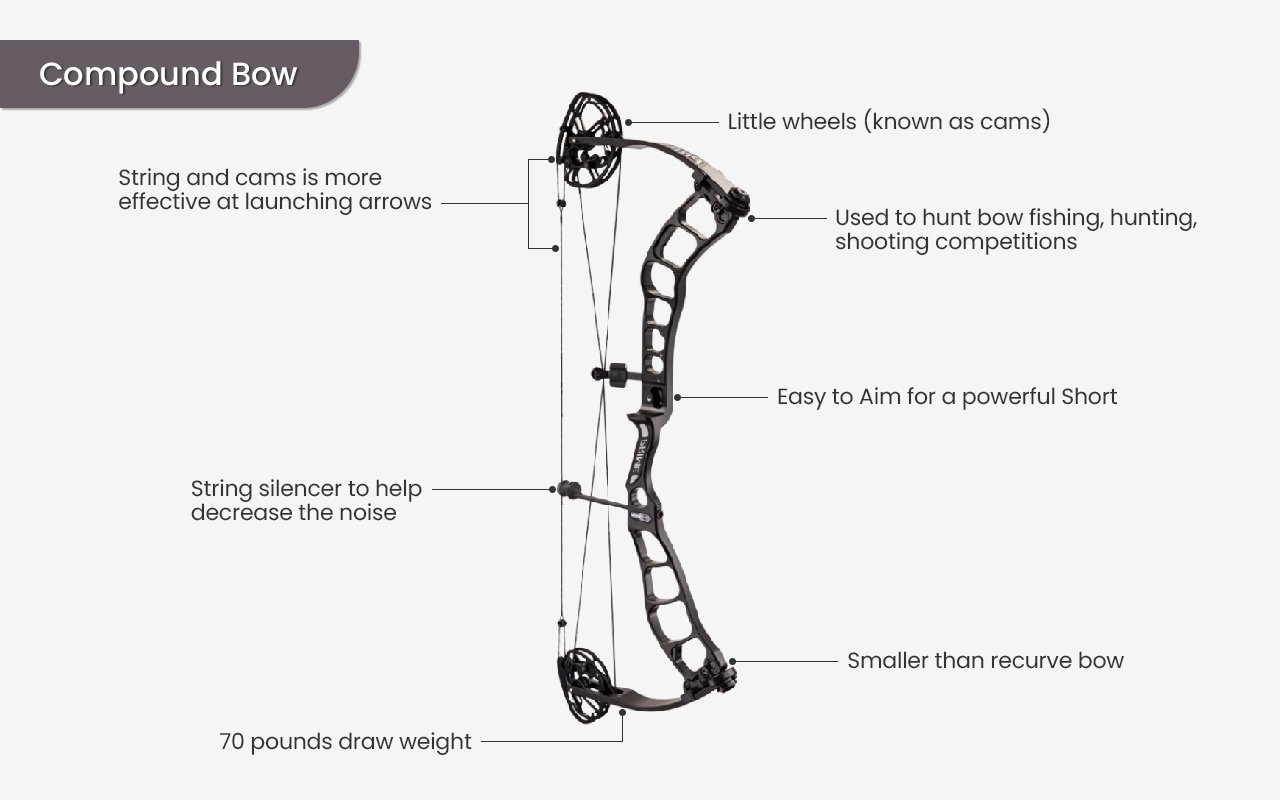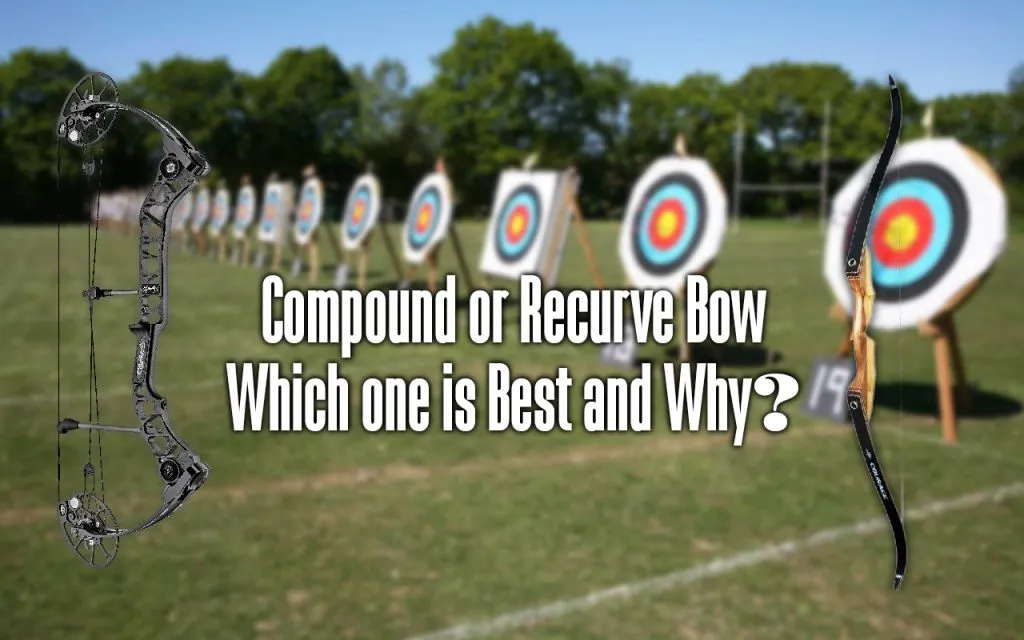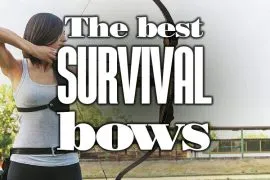[Updated 1 February 2024] A powerful compound bow is simpler to aim than a strong recurve since the string pull at the full draw is decreased due to the let-off. It is also more compact, adaptable, and has a wider range of model alternatives and market availability. The recurve bow is less expensive, simpler to maintain, more fashionable, and the type of bow that most beginners are taught to use. It is also the only bow eligible for competition in the Olympic Games.
Which recurve bow should you get as your first, or what should be your next bow? Do you want to join a club? Are you ready to go hunting? Are you simply interested?
If you’re stuck between or don’t know the fundamental distinctions between a compound or recurve bow, we’ll try to comprehensively summarize everything for you in this post. We’ll go through everything you must know about each type of bow and how it’s utilized and provide an explanation for why people use them.
Let’s begin with a quick overview of both types of bow and the key differences, just in case you’re unfamiliar with the topic.
Recurve – Major feature – Limb Re-curve
Table of Contents

A recurve bow’s limbs curve towards the archer near to the riser but away from them at the tips or end. This curve, also known as a recurve, can store and distribute more power to an arrow than a basic longbow of the same size. A longbow is a conventional bow form that you could make from a stick and string. The limbs and strings form a traditional form of D, with no-recurve tips. A typical longbow is about as tall as an archer and quite lengthy. Modern Longbows are not nearly as large as this example. Some excellent examples of these kinds of bows may be found in our best recurve and longbow roundups.
Compound – Major feature – ‘Let Off’

The term “compound” comes from the little wheels (known as cams) at the extremities of the limbs, which work together with the string to compound the tension forces within. What that means is that rather than having to hold back all of the power stored in the bow when it’s fully drawn, you only have to release the string. The cams will unwind and speed up the string faster than your weight as it comes free of your fingers. The term “let off” refers to the impact of this decrease in personnel on the force.
Here’s a short example
When aiming with a 70 lbs draw weight recurve bow, you must pull and steady back 70 pounds. When you fire an arrow from your bow, it has a kinetic energy of roughly 70 pounds. The draw on a 70 lbs compound bow with a 50% let-off entails 70 pounds of weight to be drawn through but only 35 pounds of force to be held back when aiming. The arrow will still be released with 70 lbs of force.
Hopefully, this will help you determine what bow to choose. Suppose it hasn’t; check out our article on all the different types of bows available today, which covers some of this material in further depth. Don’t forget to visit our blog post that details the top compound bow for every budget.
Let’s look at the most important feature categories of both types of weapons.
Power
The top end of bows available on the market for both types is about 70 lbs draw weight. A bow with 70 lbs of draw weight can accomplish almost anything a person might want to do with one. Due to the fact that most manufacturers and shops don’t stock 80-pound bows, there isn’t much demand for them.
A 70 pounds draw weight compound bow should outperform a 70 lbs recurve drawn to an appropriate length and launched with the same length and weight of the arrow in ideal circumstances. You’d expect both to have the same amount of power, but in actuality, the compound system of string and cams is more effective at launching arrows and ends up being more powerful in the field. Have a look at this article to see which are the most recent compound bows.
Most Powerful – Compound
Aiming
Returning to the let-off yet again. When aiming a 70-pound compound bow at full draw with an 80% let-off (which is typical), you’ll only have to resist 14 pounds of effort. You must resist pulling the string with 70 pounds of force straining against you to draw a 70-pound recurve bow to an optimal length, requiring you to apply and aim with 70 pounds of pressure. That has to give the compound the advantage.
Easiest to Aim – Compound
Noise
This is a toss-up. A compound bow and recurve bow can both be equipped with limb dampeners and string silencers to help decrease the noise produced when firing (look at those links for more information on both types of silencers). If you’ve tuned your bow correctly and are shooting an arrow that’s just right for the power of the bow, you’d anticipate both bows to be quiet.
Loudest – Draw
Size
The size of a compound bow is often significantly smaller than that of a recurve. A 70-pound compound measures about 30 to 32 inches from limb tip to limb tip. You can expect a recurve bow with all of the same specs to shoot between 60 and 64 inches from tip to tip. A recurve bow is twice the length of a compound bow.
Smallest – Compound
Weight
A compound bow is more complex to build than a recurve. Although the recurve is larger, when you include the cams, stops, and additional string in with the thickness of the riser to handle the strain, you usually wind up with a heavier compound bow than a recurve (which merely keeps things straightforward).
Lightest – Recurve
Portability
The majority of recurve bows are takedown now. This also implies that you may take off the branches and break them down into three parts, including a riser, top limb, and bottom limb. You will not be able to do this with a compound bow easily. A compound remains in place as a result of its components. A takedown recurve is smaller and takes up less room than a compound bow, but you can’t shoot it when it’s broken down.
Most Portable – Recurve
Adjustability
You can buy various limbs to alter and boost the power of a recurve bow. The power of an assembled bow with one set of limbs is limited to just one range. To shoot an arrow with less force, under-draw a recurve bow. However, this isn’t really adjustability; it’s only going to produce terrible form. By using a tool to adjust the position of the cams, you may alter the draw weight/power and draw length of compound bows. Bows such as the Diamond Infinite Edge can be adjusted from 5 lbs to 70 lbs and draw length from 13″ to 31″ without the need of a bow press.
Most Versatile – Compound
Construction
These days, both types of bows are made from various components. The riser of a recurve bow may be constructed from aluminum, carbon, or laminated wood, whereas the riser of a compound is typically made out of aluminum or carbon. Both types of the bow are constructed with similar wood laminations in the limbs. There’s no obvious winner in this debate.
Best Construction Methods – Draw
Cost
The Samick Sage is a decent mid-range recurve that costs half of the price of a well-regarded compound bow like the Diamond Infinite Edge Pro. There are additional elements to consider when building a compound. Simply said, moving parts, assembly, and transport are more technical; however, the recurve maintains it simple and inexpensive. What’s the cost going to be?
Cheapest – Recurve
Maintenance and Repair-ability
If your string breaks while hunting in the field, you’ll be unable to use your bow. In contrast, the Recurve bow is simple to re-string yourself and manually. Clearly, the winner is a recurve. It’s also simple to repair a broken limb on a recurve; all you need is another limb (or set of limbs) and attach them together. It’s not so straightforward with a compound bow because they’re meant to stay put and only be taken apart and repaired by a professional at a pro shop. Because there are more moving elements on a compound bow, it is more likely that something will go wrong.
Easiest to Fix – Recurve
Accessories
A riser may be drilled to accept a variety of attachments for both types of bow. You may add a sight, arrow rest, quiver, stabilizer, string silencers, and limb dampeners to either type of bow. In this category, there’s no clear winner.
Most Available Accessories – Draw
Availability & Choice
You’ll discover a wide range of both types of bows on the websites of any of the major manufacturers, such as Bear Archery, PSE, and Hoyt. The compound is the preferred choice of hunters, and because hunting is such a large industry in the United States and other regions of the world, compound bows have a slight edge over recurves when it comes to choice and selection.
Best Choice and Availability – Compound
Styling
While you may get some really stunning compound bows, they aren’t nearly as attractive to the eye or to the touch as a bow with a rich history and sense of tradition like the Bear Grizzly.
Most Stylish – Recurve
Cool
Hawkeye uses a compound bow, while Katniss Everdeen uses a recurve bow. Compounds are among the most memorable bows in video games, such as the predator bow in Crysis. In terms of cool, there is no clear winner. You can be equally as cool shooting either of these. As long as you’re precise and perhaps have superhuman abilities.
Cool People Shoot – Either!
For hunting?
You can hold the bow at full draw for lengthy periods if a compound has ‘let-off,’ allowing you to wait hidden and still in a tree stand or the woods to take down your prey. When fully built, compounds are also smaller and more portable. With its unique design, it’s easier to attach to a backpack and won’t get caught as readily in the woods while you travel. The hunter’s compound has clearly become the bow of choice.
Hunters Favor – The Compound
For youth?
Adjustability is a must for youngsters archers. As a youth’s bow grows, it must be adjusted in draw length and power to match the youngster’s frame. This is easily accomplished with a compound bow, which does it far more readily than a recurve. A highly flexible compound bow will last longer and progress with your child if you’re not teaching him to become a recurve archer.
A Bow That Grows – The Compound
For beginners?
As a complete novice, you will eventually grow to the point where you desire to use a more powerful bow than the one that you initially began with. If you use a compound, all you have to do is adjust the mixture to suit your needs. You can purchase different limbs for a recurve bow, and you don’t need to buy a new bow. If you try archery at some point, you’ll typically receive a recurve bow as a present. The recurve’s simplicity must compete with the compound bow’s flexibility. Are you a beginner? We opt for simplicity…
Best for Beginners – The Recurve
Check out our list of the greatest recurves for beginners and our article on archery form.
For bow fishing?
A recurve or a compound bow can be used to hunt bow fishing. Bow fishing usually necessitates mounting a reel on the stabilizer mount of your bow and using barbed arrows, which you can then roll in after spearing a fish. Bows for both types of bows and specialty bows are available on the market. A compound is ideal for fishers who spend a lot of time at full draw aiming and waiting, but you can also snap-shot with a recurve more quickly. It’s going to come down to which you’re most used to and comfortable with; we don’t yet see a clear winner.
Bow fishers Prefer – Either
For target shooting?
There are both recurve and compound shooting competitions. The distances and targets are comparable, so you can’t tell much difference. One factor that may be utilized to separate the two is that solo is the only recurve discipline allowed at the Olympic games. There are no compounds in sight. Not yet, at least.
The Target Shooting Elite use – Recurve








2 Comments
Pingback: Useful Crossbows fundamentals for Hunters and Target Shooters
Pingback: How to Shoot With Proper Archery Form - Boss Targets